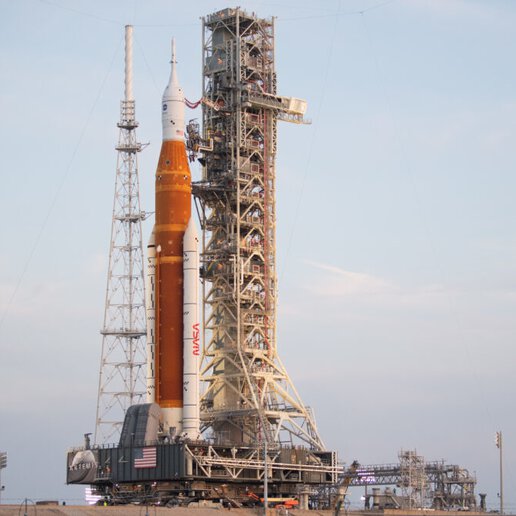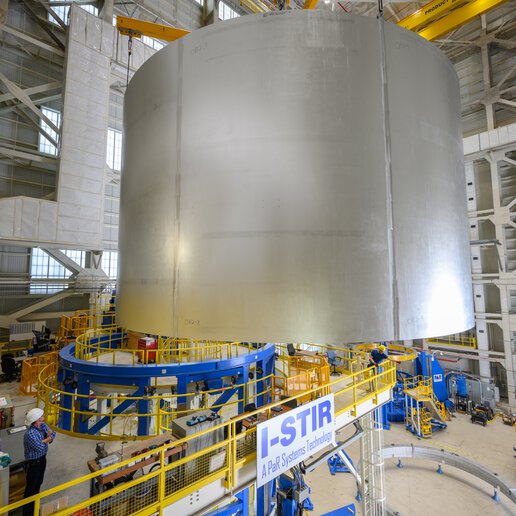Friction Stir Welding in the Aerospace Industry
Friction stir welding (FSW) is an advanced joining process that welds high-strength alloys together. Friction stir welding in aerospace applications is particularly effective because of the key benefits it provides: weight reduction, superior part strength, and high levels of process control. Not only does friction stir welding produce lighter-weight structures, but it also reduces distortion and improves upon the properties of the material—creating high-strength, high-performing structures fit for the most rigorous projects.
FSW provides such key benefits because of the unique technology it leverages to join materials. Frictional heat joins parts together in their solid state–without meeting the materials’ melting point. The comparatively low temperature produced is both energy-efficient and prevents the workpiece from warping or shrinking during the welding process. The metal is plasticized and joined together at the molecular level, resulting in a very strong, high-quality weld.
Friction stir welding in space launch vehicles produces exceptional results–which is why it has been widely adopted in the aerospace industry as the preeminent joining process. From cryogenic fuel tanks to core stage barrels, domes, and adapter rings, friction stir welding in space vehicles is the first choice for joining processes in the aerospace industry. Highly precise systems provide advanced controls and self-retracting tools to meet the most rigorous requirements.
Friction stir welding is used in aerospace applications to join critical components that make up the fuel tanks and critical structure of the space vehicle. Because FSW doesn’t add any filler material during the welding process, the resulting structure does not add any weight to the rocket. This is critical for space flight, where payload and fuel consumption are tightly controlled.
Recently, PAR was proud to support NASA in the production of the Artemis I spacecraft with our I-STIR Friction Stir Welding technology. The I-STIR technology was used to join components that made up the core stage, stage adapter, and Orion crew module.


Friction stir welding was used in the production of components that make up the fuel tanks of the Artemis SLS rocket, including: longitudinal and plug welding of the core stage barrels, circumferential and gore welding of the core stage domes, core stage adapter rings and adaptive weld tooling for the launch vehicle stage adapter.
The rocket’s fuel tanks are primarily what makes up the core stage of the rocket. Our friction stir welding systems are used in the production of the barrels, rings, domes and inter-tank assemblies that make up the components of fuel tanks of NASA’s Space Launch System (SLS) core stage. On testing, the tank withstood more than 260% of expected flight loads before buckling and rupturing.
FSW is an exceptional choice for many aerospace applications.
Invented in the early ’90s, FSW was first used by NASA to weld super lightweight external tanks on a space shuttle. Today, FSW is used in many more use cases.
Applications for FSW in the aerospace industry include the production of:
- Liquid hydrogen and oxygen fuel tanks
- Core stage barrels
- Core stage domes
- Core stage adapter rings
- Launch vehicle stage adapters
- Primary structure of launch vehicle crew modules
Benefits of FSW in Space:
Speed and Efficiency
FSW systems provide the controls and customization needed to weld structures quickly and efficiently while reducing material waste, further reducing cost and effort required.
Weight Reduction
Unlike other joining applications, FSW joins high-strength lighter weight alloys without the need for filler material, providing strong, durable, and stress-resistant joints at the same weight as the starting material.
Increased Stress Resistance
Due to the plasticization of metal that occurs in the FSW process, the molecular structure of friction stir joined structures is as strong as that of the starting material.
Environmental Benefits
FSW reduces energy consumption and minimizes material waste compared to traditional processes. The lower heat input also reduces hazardous fumes and pollutants, making it cleaner and more environmentally friendly.
Accuracy and Precision
Advanced application software integrates CAD/CAM packages into the FSW process to accurately track weld paths, delivering high levels of control over all aspects of the welding process.
Real-Time Quality Monitoring
Advanced application software can manage weld data and measure and control process parameters to achieve up to six-sigma weld quality. This data can be recorded in Statistical Process Control programs.
Eliminate Post-Weld Inspections
FSW can eliminate the risks of porosity, inclusions, and weld solidification cracking. The consistent, uniform quality of the weld in combination with data to inform processes can potentially eliminate post-weld QA tests.
Minimized Distortion
Friction stir welding preserves the original shape of the material by using frictional heat and mechanical stirring rather than melting the material, thereby minimizing distortion or deformation.